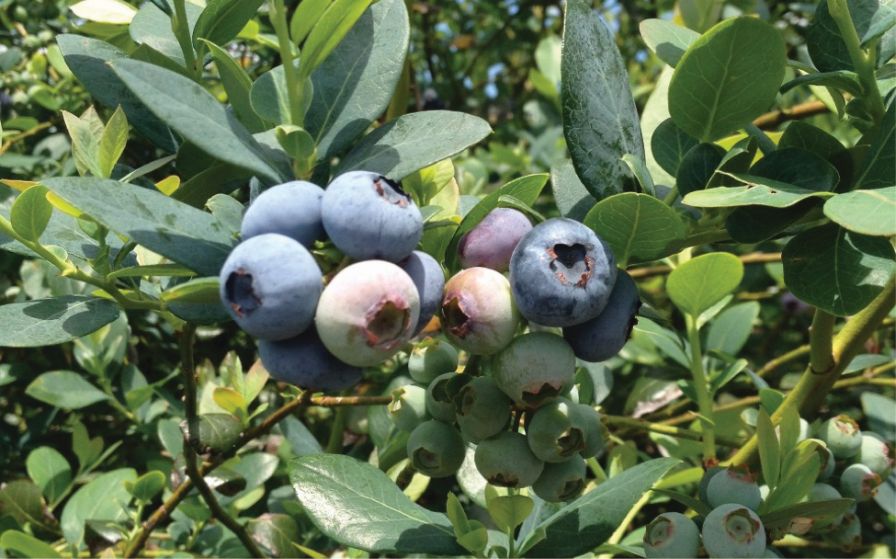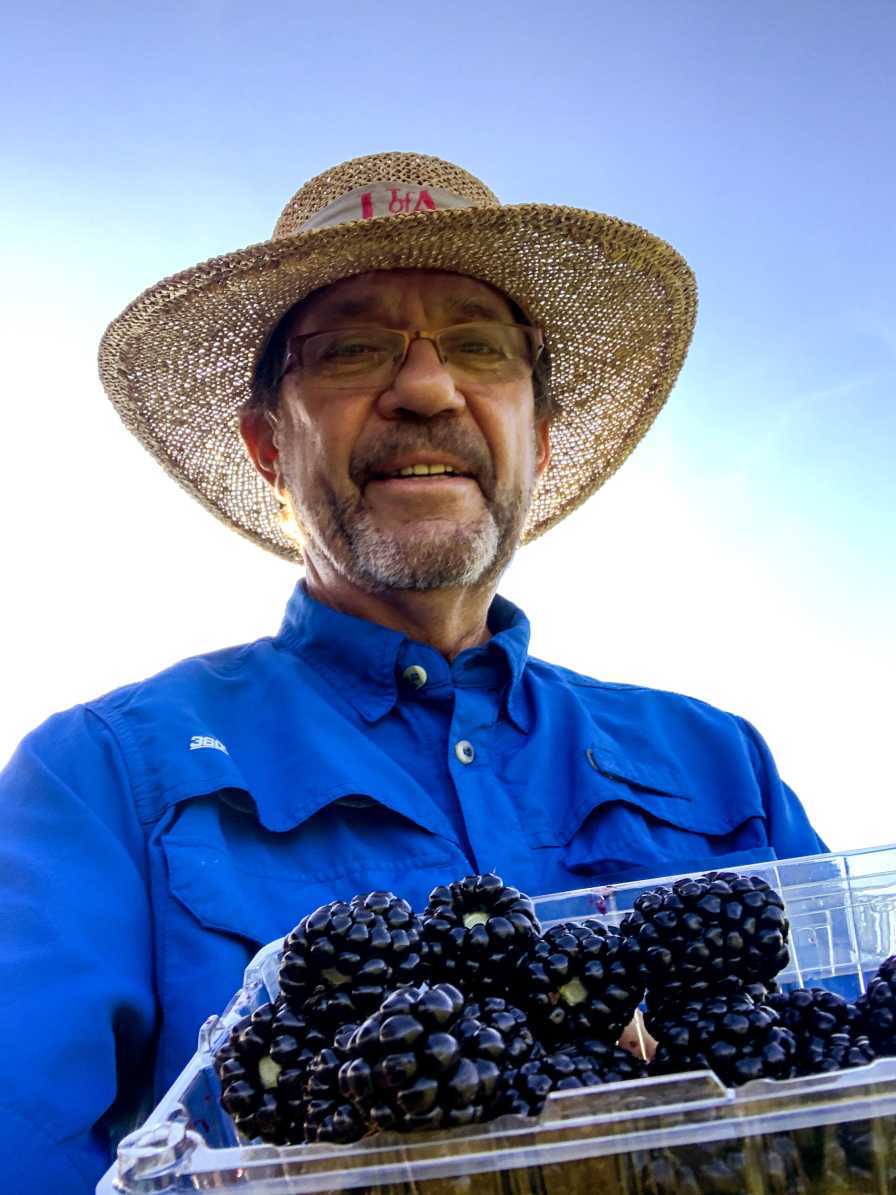Southern Highbush Berries Have Turned the Blueberry World Upside-Down
I remember a spring day in 1995, when I had the honor of visiting the blueberry breeding program led by Dr. Paul Lyrene at the University of Florida (UF). The day was even more special because the legendary blueberry breeder Dr. Arlen Draper was along for the visit. Arlen and I ventured out to the research unit, and found Paul busy, either digging up plants, moving irrigation lines, pulling weeds, can’t remember which task but it was manual labor.

‘Arcadia,’ a recent UF release. (Photo: University of Florida Blueberry Breeding Program)
I was impressed, to say the least; I had quit chopping weeds some time back in my breeding work in Arkansas. Paul showed Arlen and me around his breeding plots, and the progress and magnitude of the program was fabulous. His high-density system of seedling and selection testing was not like any I had seen before. He had some of the most advanced blueberry material I had observed. But I could not get away from the question of Paul working in the plots so vigorously.
He explained that times were tight, funding was limited, and there were many support constraints. I remember leaving Paul and thinking that I had seen an exciting sight. Surely his program would find success as defined by expanded use of his varieties, and the broader use of the low-chill material that he and prior colleagues had advanced. And, this success would result in his “ship coming in” as far as program support from royalties.
Innovation Through Incorporation
Now, 22 years later, the world of blueberries has changed. Much of this change is due to the tremendous innovation of incorporating low-chill requirements in highbush-type blueberries, or as they are known now, Southern highbush blueberries. The expansion of blueberry production due to this innovation is remarkable.
Not only did this advancement create the Florida blueberry industry, it has become the foundation of California production, as well as becoming important in Georgia and other states. But, the impact goes well beyond the U.S. borders, and has allowed production in many countries including Spain, Morocco, Peru, Chile, Argentina, Australia, South Africa, and now Mexico.

‘Patrecia,’ a new UF release. (Photo: University of Florida Blueberry Breeding Program)
The list continues to expand in areas where these low-chill varieties are adapted. As I like to say, the “ship came in” and the support to the UF program has been monumental. Paul has been retired now a few years, but if he is still pulling weeds, it is just because he wants to!
Magic or Luck or Breeding
How did this development of low-chill varieties occur? The story goes back to the mid-1950s when USDA small fruit breeder Dr. George Darrow was cooperating with then UF breeder Dr. Ralph Sharpe. They crossed the Florida-native and low-chill species Vaccinium darrowii and the northern highbush, high-chill V. corymbosum. There was a little magic or luck that came into the picture when they did this. The mother parent V. darrowii from the wild had two sets of chromosomes, called a diploid. The paternal parent V. corymbosum had four sets of chromosomes, known as a tetraploid. Usually when a breeder makes this cross, plants with three sets of chromosomes result, called triploids, and they are often sterile or set little fruit – a dead end one might say.
The magic that happened in Florida was that the mother V. darrowii produced something called an unreduced gamete, or rather its ovule had two sets of chromosomes (two times), and the V. corymbosum parent went through its normal reduction in chromosome number in flower bud formation from four times to two times in its pollen.

‘Endura,’ a recent UF release. (Photo: University of Florida Blueberry Breeding Program)
The 31 offspring they got from these crosses included some that were four times, or tetraploid, and they had reduced chilling as well as improved fruit quality compared to V. darrowii. This four times chromosome plant could then be crossed to other V. corymbosum plants to further improve fruit quality and size, and the low-chill plants could be identified easily in Florida. With more generations of crossing, the first Florida “Southern highbush blueberries” were released in 1976, ‘Sharpeblue’ and ‘Flordablue.’
Breeding at UF continued with Dr. Wayne Sherman followed in 1977 by Lyrene leading the program, and the fabulous varieties including ‘Star,’ ‘Jewel,’ ‘Emerald’ and a host of others resulted. Now there are dozens of UF varieties, as well as varieties developed in other U.S. breeding programs in addition to Spain, Australia and other countries that are all derived from Florida genetics. The UF program continued under the leadership of Dr. James Olmstead following Lyrene, and is now under the leadership of Dr. Patricio Munoz.
I don’t want to say that anyone outsmarted Mother Nature or the weather in this story. But the diversity of blueberry production in environments where there “once was none” that has developed from the reduced-chill breeding effort is one of our most exceptional berry breeding stories of the modern day. And I guess the day of my visit to Florida turned out to include two blueberry breeding legends, Arlen and Paul. Let the blueberry good times roll!










